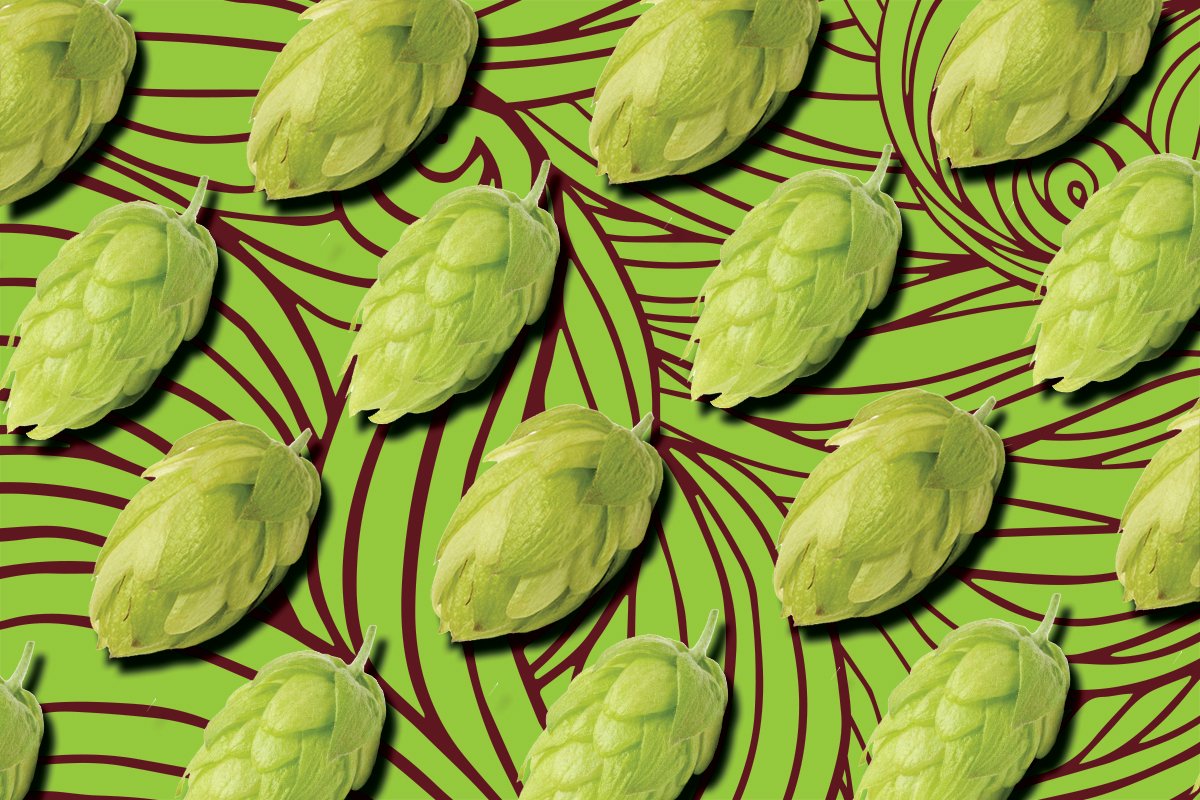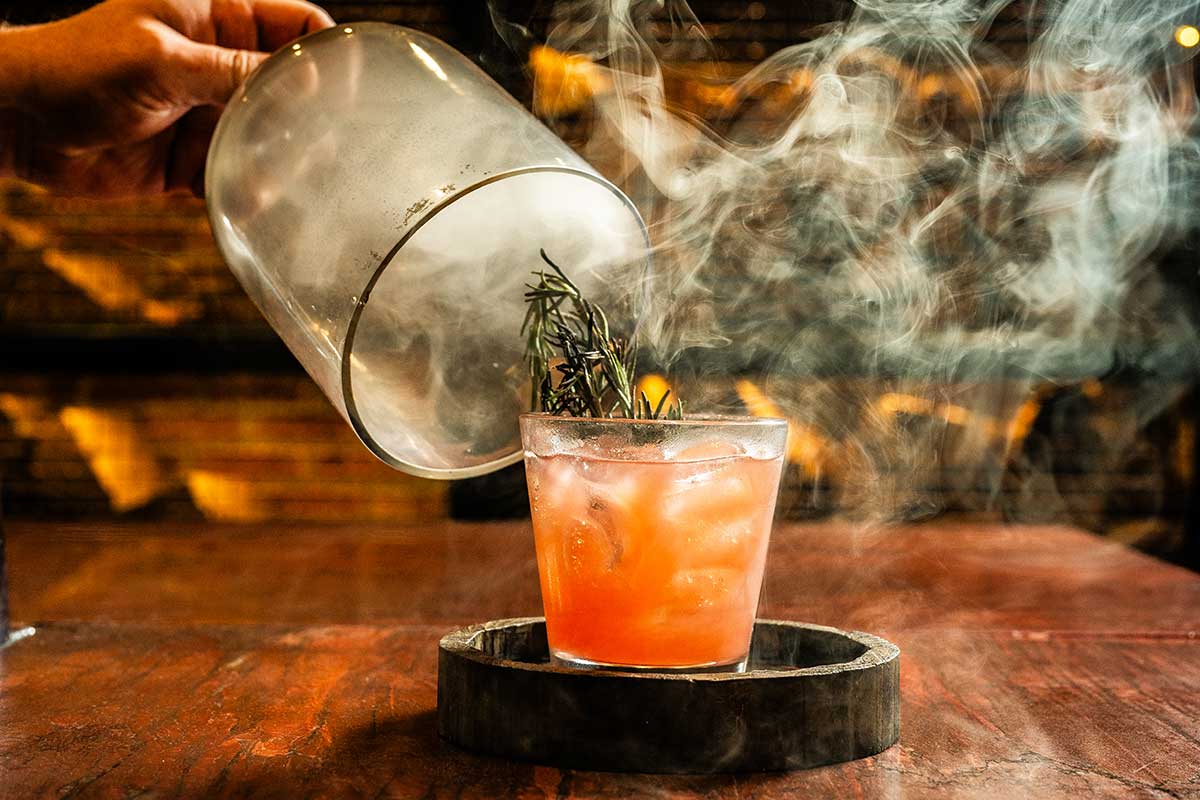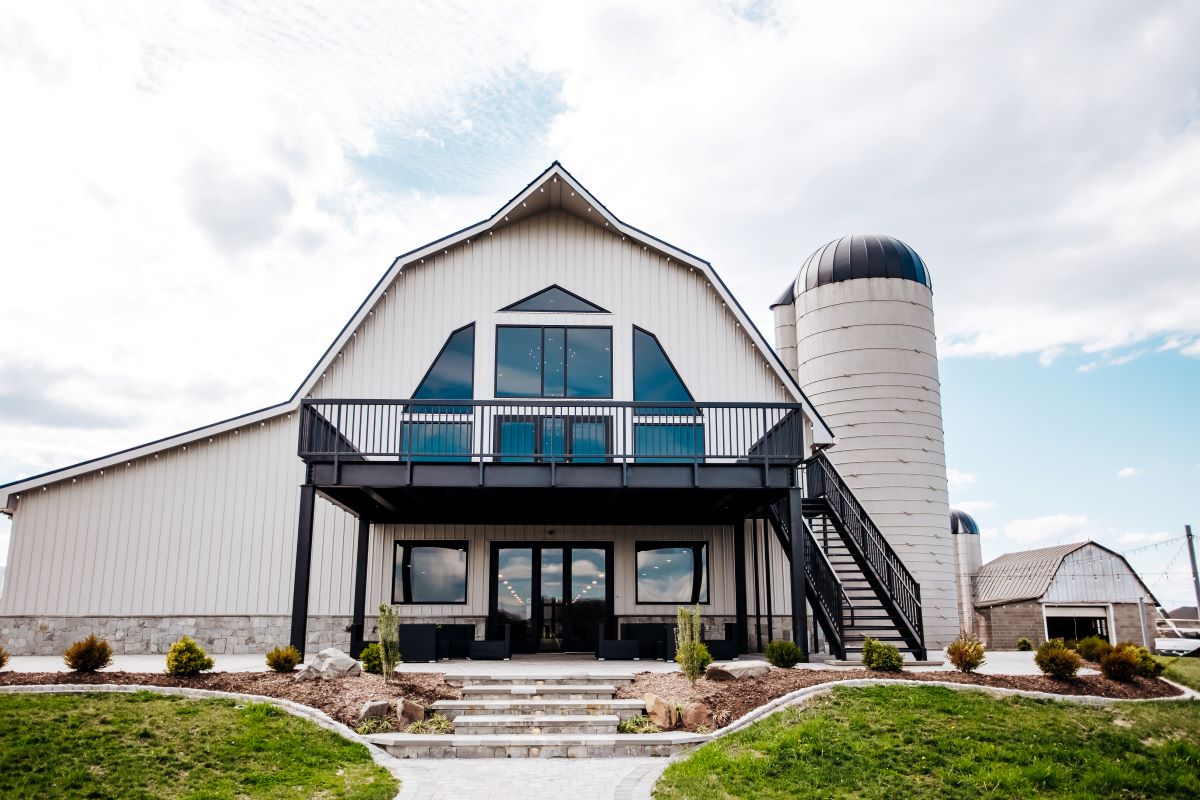
In 2012, when legislation was passed allowing breweries to sell pints of beer for drinking on-site—a game changer for the industry and the boost it needed to start the brewery boom—Loudoun County had only one acre of land dedicated to growing hops. Now, more than five years later, as the number of breweries continues to rise, the hops acreage does too. The county now boasts 18 acres, according to Kellie Hinkle, agricultural development officer for Loudoun County Economic Development.
The total acreage of Virginia hops is open for speculation, but the estimate is 30 acres filled with almost 23,000 plants, according to Laura Siegle, who runs Virginia Cooperative Extension’s Virginia Hop Grower Survey. And that number, from 2016, doesn’t include wild hops grown in Virginia, sometimes sprouting in fields or climbing bridges that have been fallow for decades—or growers who don’t participate in the survey.
But hops are only one part of the beer-making equation. Brewers’ use of raw, unmalted, Virginia-grown wheat and experimental yeast also plays a role in beer. What farmers are growing, brewers are using, and it’s beginning to change the shape of brewing.
When harvested in Virginia, Cascade, a popular variety of hops famously grown in the Pacific Northwest, will never mimic those hops grown in the Yakima Valley of Washington. But that doesn’t mean Virginia hops aren’t capable of making great beer. Josh Chapman, brewer and founder of Black Narrows Brewing Company in Chincoteague, says Virginia hops shouldn’t be judged against Washington’s, “that’s like saying a Florida peach is no good because it wasn’t grown in Georgia. Will it taste different? Will the hops smell different? Is that necessarily a bad thing?”
When Chapman began brewing with Eastern Shore-grown Cascades (from farm Seaside Hops), he says “they were softer on the grapefruit and more berry. Not the textbook understanding of Yakima Cascade.” There’s no guide for making the best Virginia beer but the new crop of Virginia hops are changing the story and taste of Virginia beer.
Brewers like Chapman see the future of Virginia beer in local agriculture, including wheat.
Unmalted Virginia wheat is an affordable grain, especially compared to hops. In recent brewing history, not since Colonial times, has raw, unmalted wheat had a place in the American brewhouse. Brewers concluded wheat made a better loaf of bread and barley made a tastier beer; plus barley was easier to malt. Harkening back to wheat proves both the modern brewer’s creativity and the willingness of drinkers to trust brewers with wild styles such as spontaneous beer.
Pen Druid Brewing in Sperryville uses raw wheat from The Farm at Sunnyside in Rappahannock County for Spontaneous, a sour ale. This so-called wild beer can be defined by its lackof laboratory-grown yeast. Pen Druid uses aged Virginia hops, letting the beer cool in a large copper pan, thereby creating conditions for the unfermented beer to become naturally inoculated with a Rappahannock cocktail of wild yeasts and microorganisms. It’s then aged for 16 months in Linden Vineyards’ wine barrels.
In addition to ingredients, this process borrows from the Belgian brewers who blend multiple vintages of barrels. Pen Druid plans to mix beers from its 2016, 2017 and 2018 inventory, which will arguably be one of the most anticipated Virginia beers when released this year. This particular Belgian method allows for re-fermentation in the bottle (and keg), which like Champagne, becomes bubbly in the bottle.
While a minority of brewers’ efforts goes toward spontaneously fermenting beer, most American brewers work with pure yeast culture (yeast that is void of additional microorganisms and bacteria). Fortunately, there’s a local yeast lab.
The opening of JasperYeast by co-founders Jasper Akerboom and Travis Tedrow will impact Virginia beer as many breweries have begun to work with them. Located next to Ocelot Brewing Company in Sterling, they have also provided yeast to Black Hoof Brewing Company (Leesburg), Crooked Run Brewing (Sterling and Leesburg), The Farm Brewery at Broad Run (Broad Run), Lake Anne Brew House (Reston) and Powers Farm & Brewery (Midland).
Akerboom produces pure yeast culture but also isolates wild yeast, swabbing yeast off flowers, fruits and trees to see if the yeast is alcohol tolerant, if it can ferment and if it can turn sugar water into beer.
Akerboom likens the process of growing wild yeast to taming a wolf and keeping it as a pet, “he looks very nice and he has some characters you really like, but it might have some other stuff and you have to breed that out.”
JasperYeast helped Chapman isolate strains of yeast cultured from a Chincoteague oyster. “This place is known for its aquifers and plants, and you can get yeast off anything,” Chapman says. But just because you can get yeast off anything, should you? Akerboom oversees that part of the process, making sure the yeast is healthy in multiple batches of beer. The beers Chapman will produce with this strain are not a gimmick; they are an example of terroir or “merroir” as he says—unique flavors from the sea.
You may not be able to taste the sea in Chapman’s beer, or recognize Rappahannock terroir in Pen Druid’s Spontaneous beer, but these will be one-of-a-kind ales released in Virginia, changing the landscape of what local beer means.



